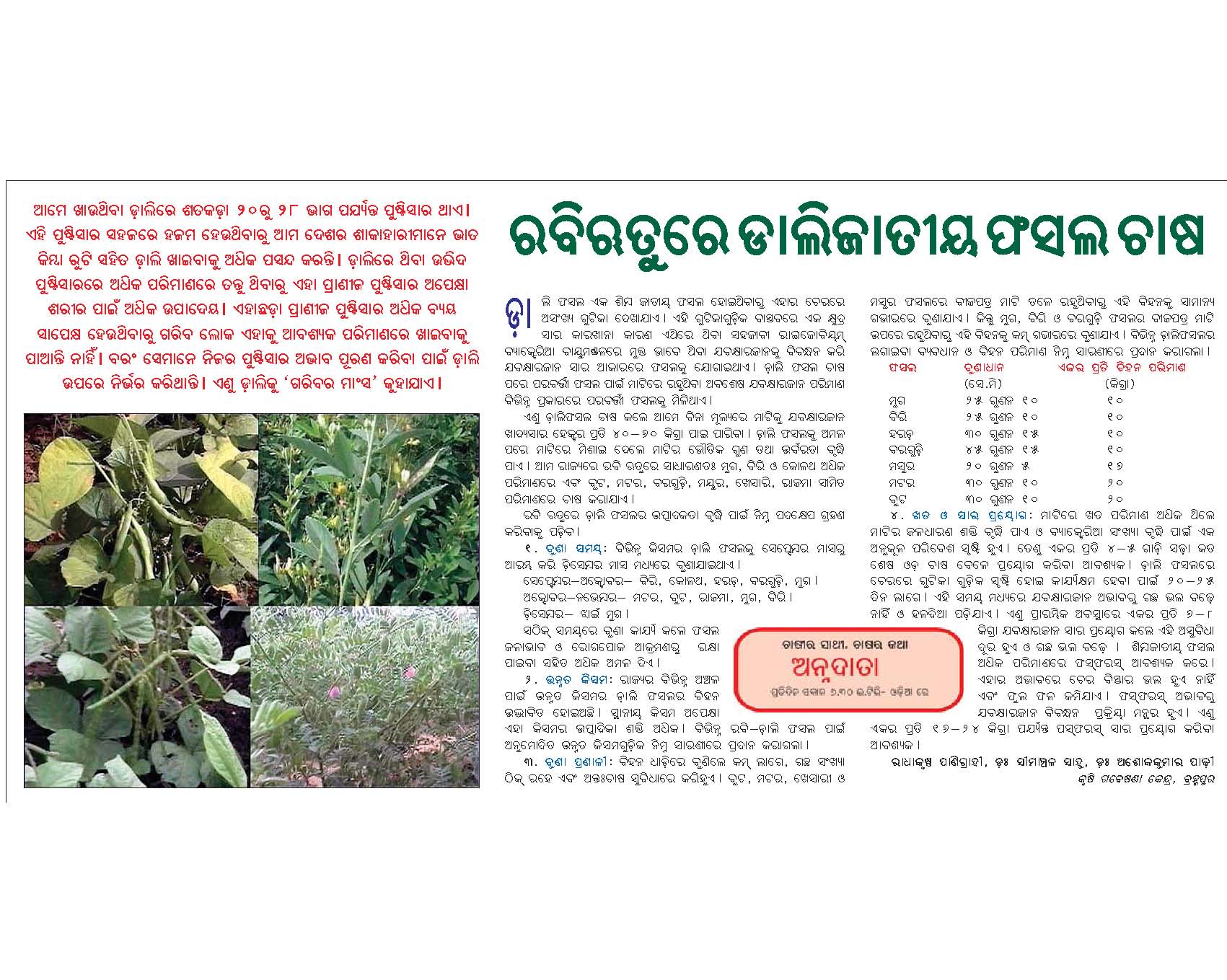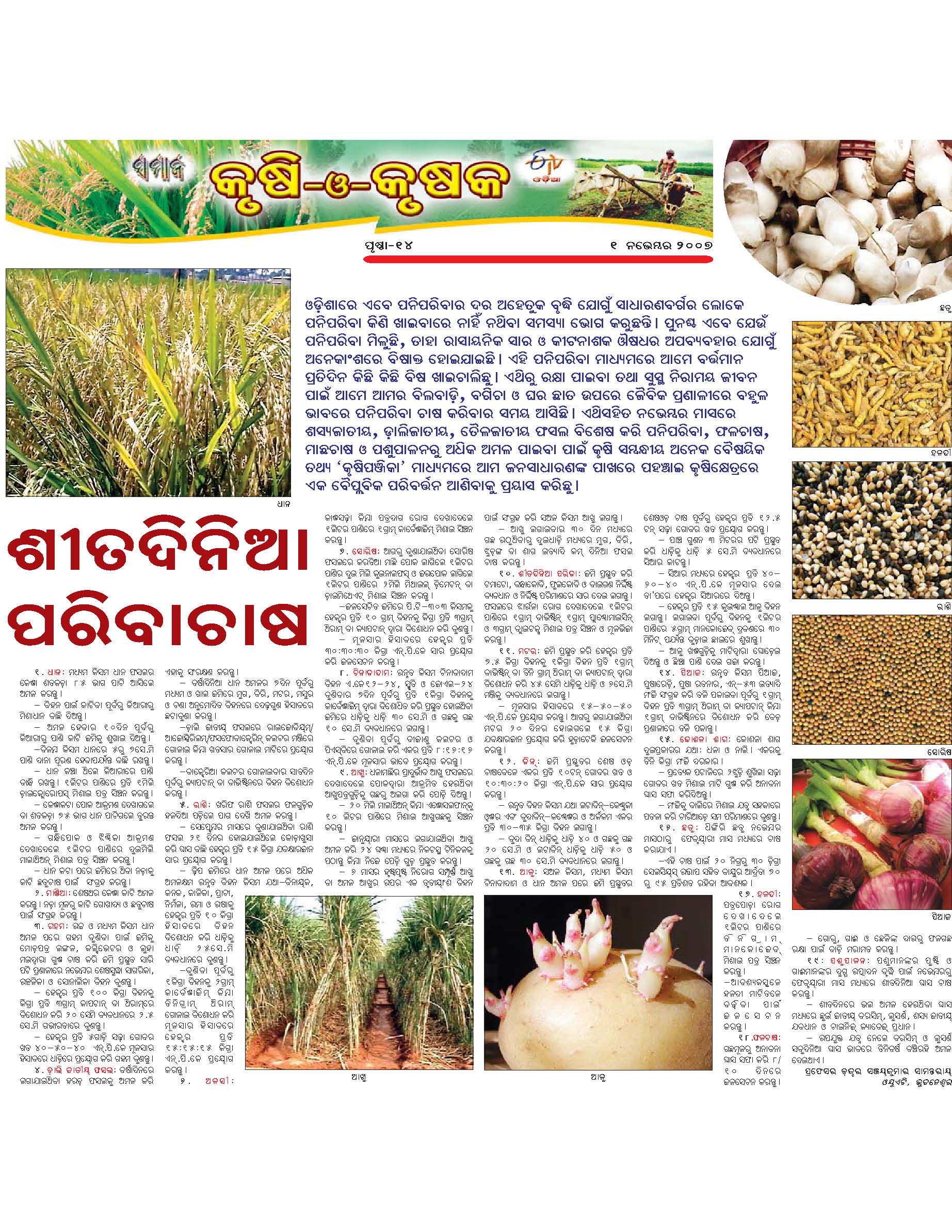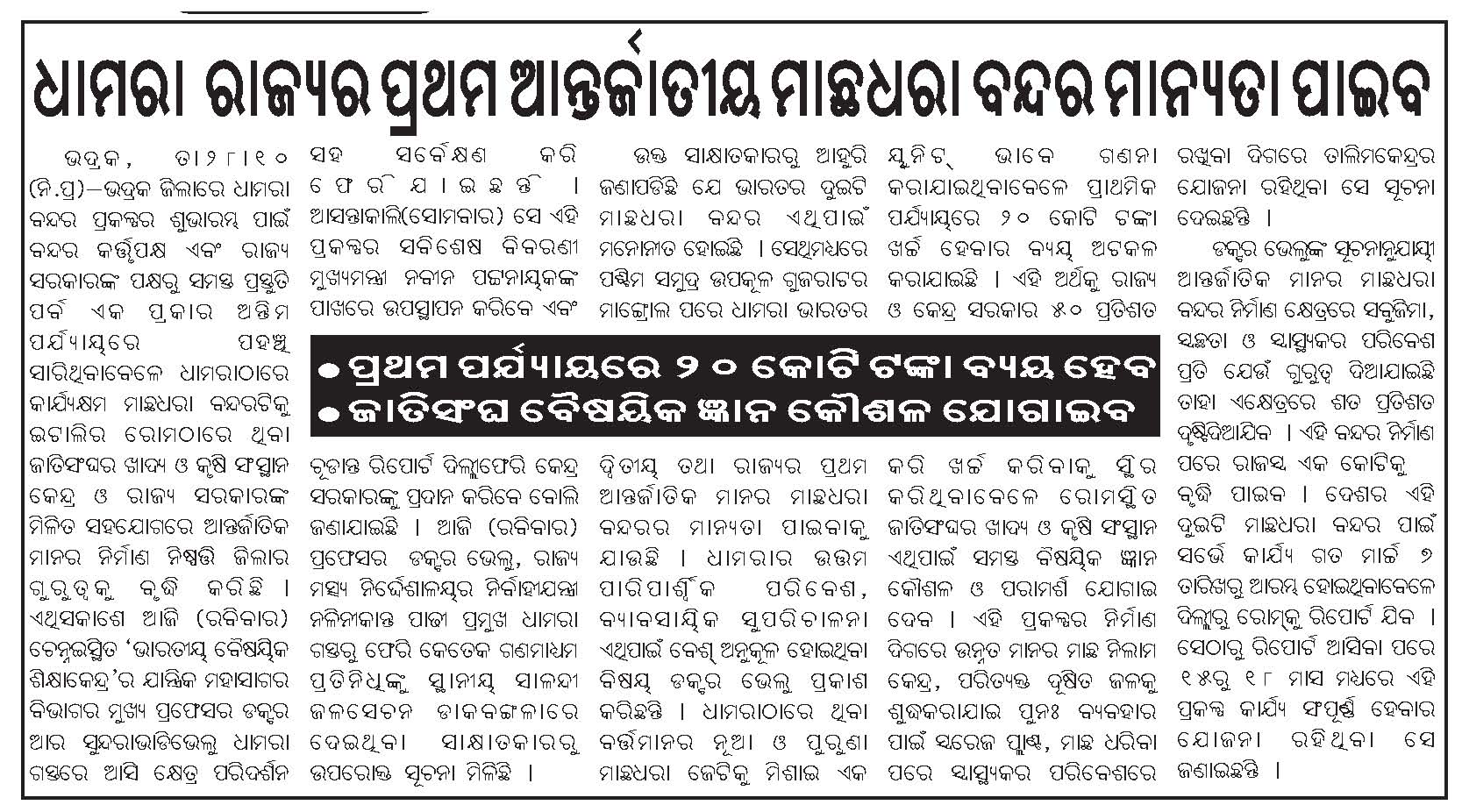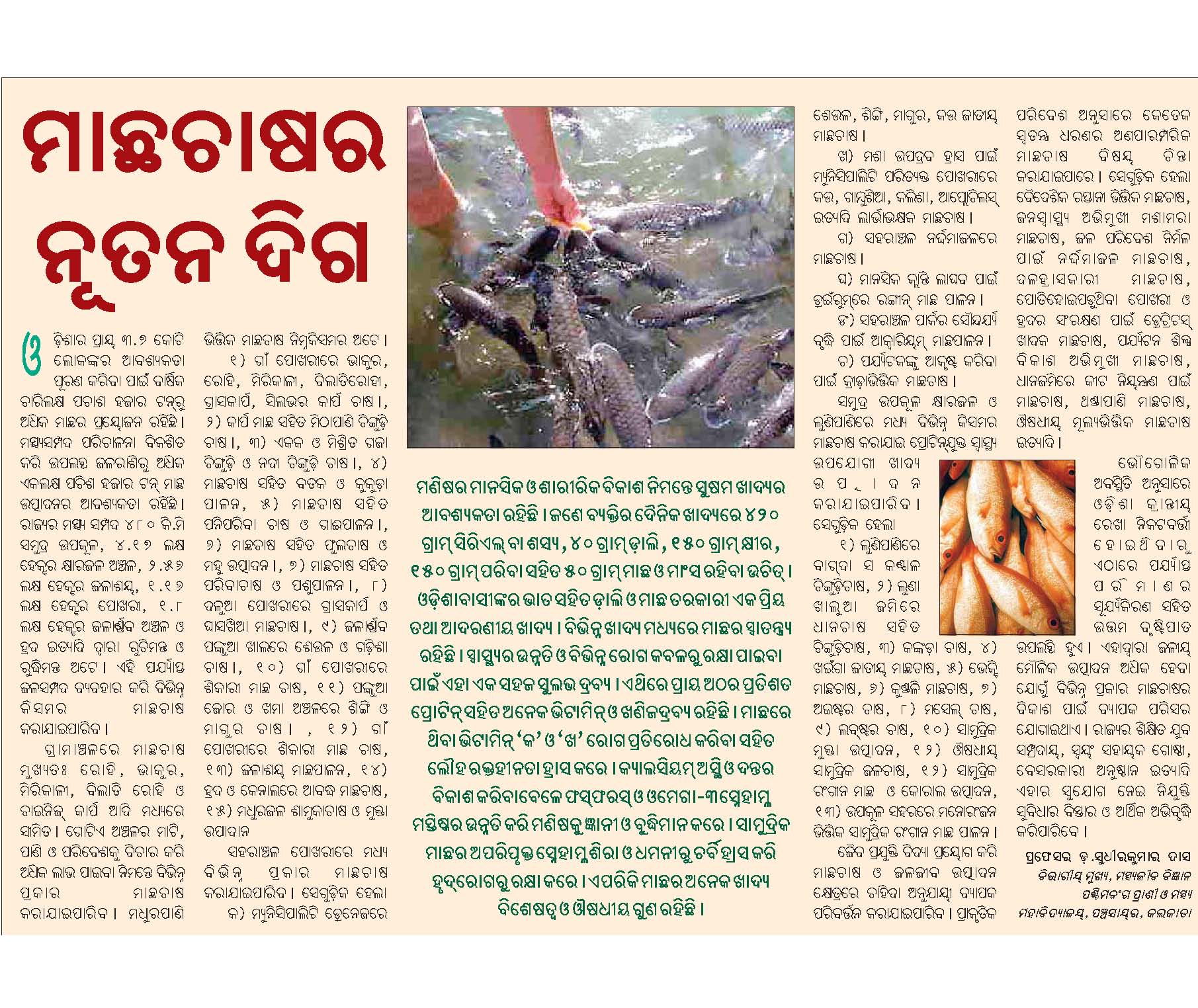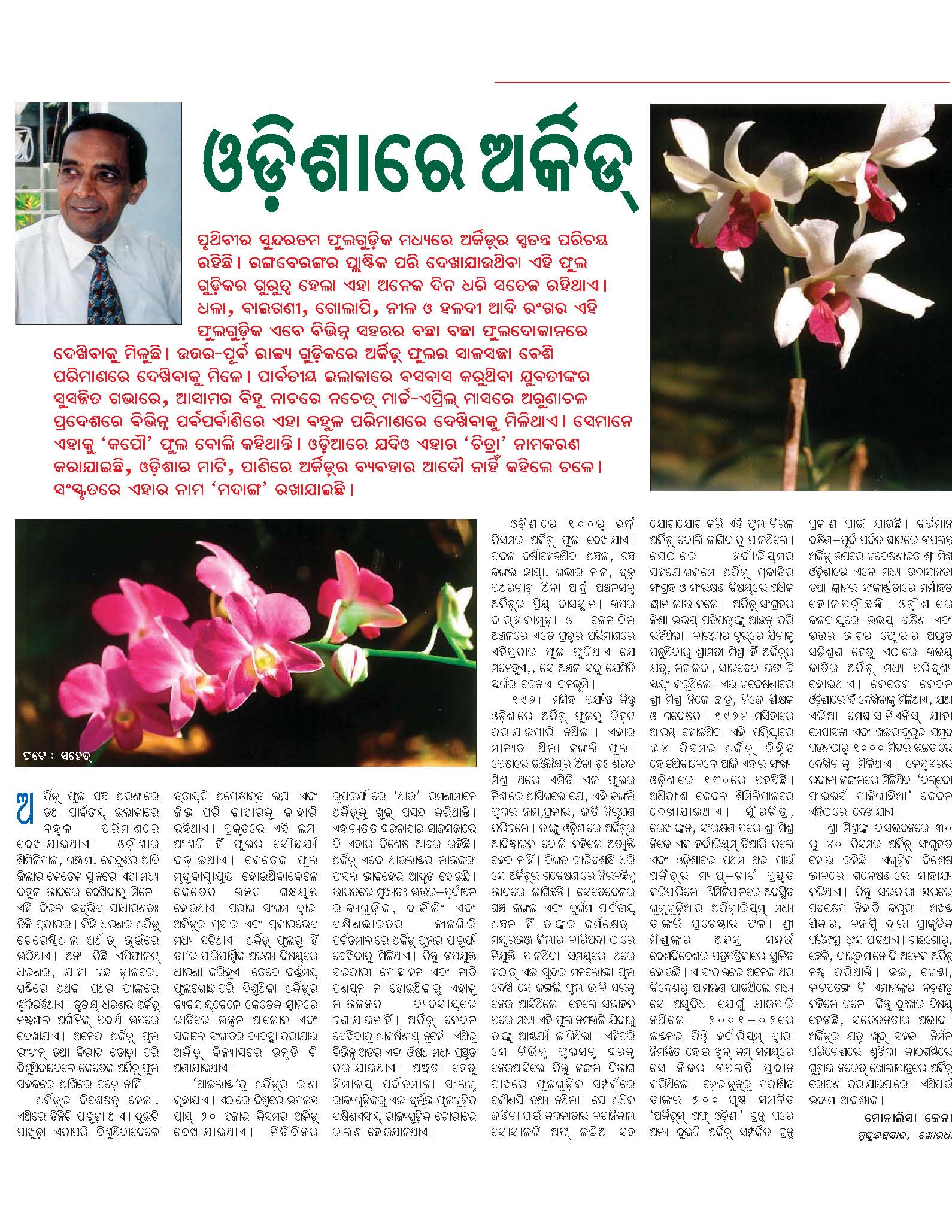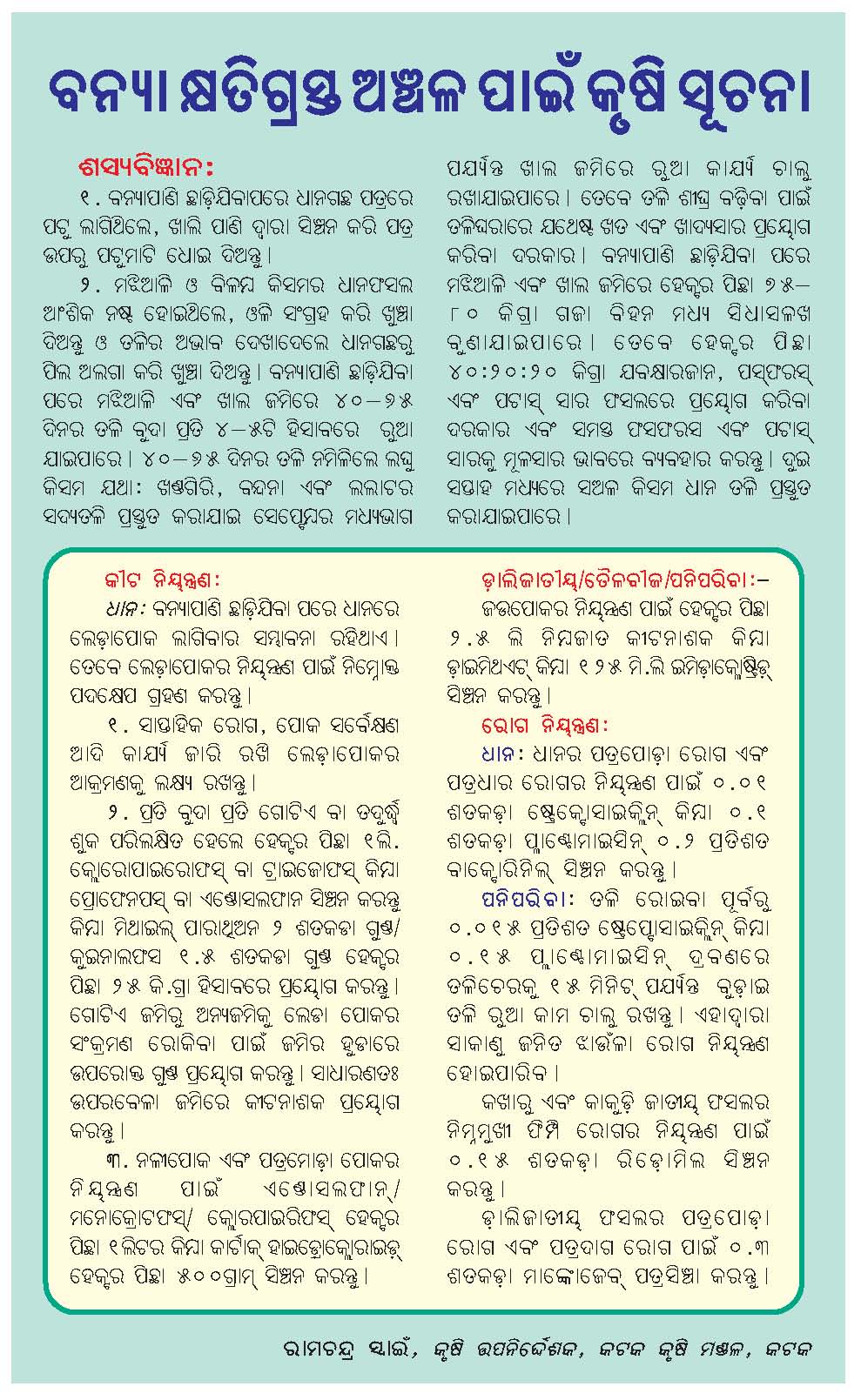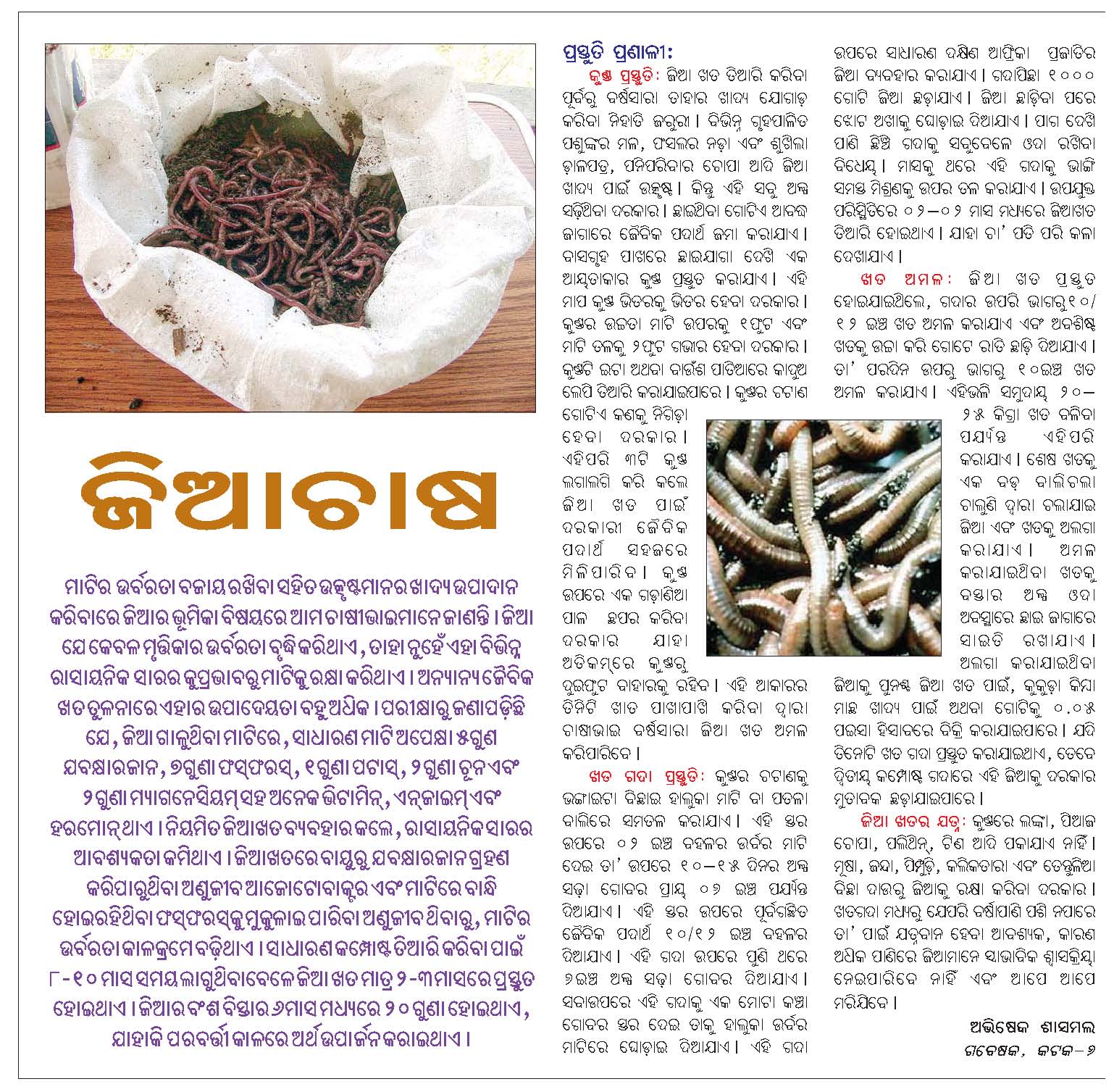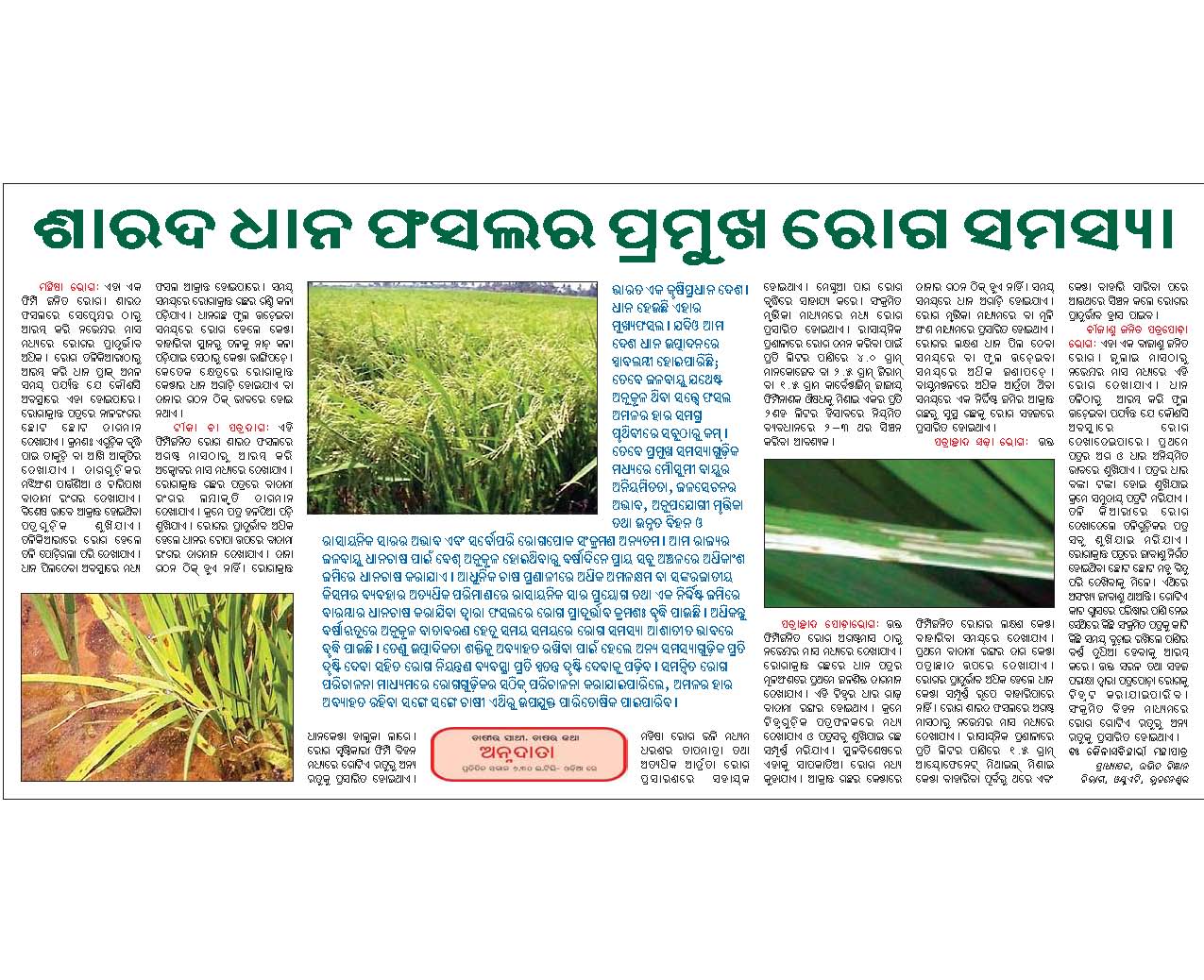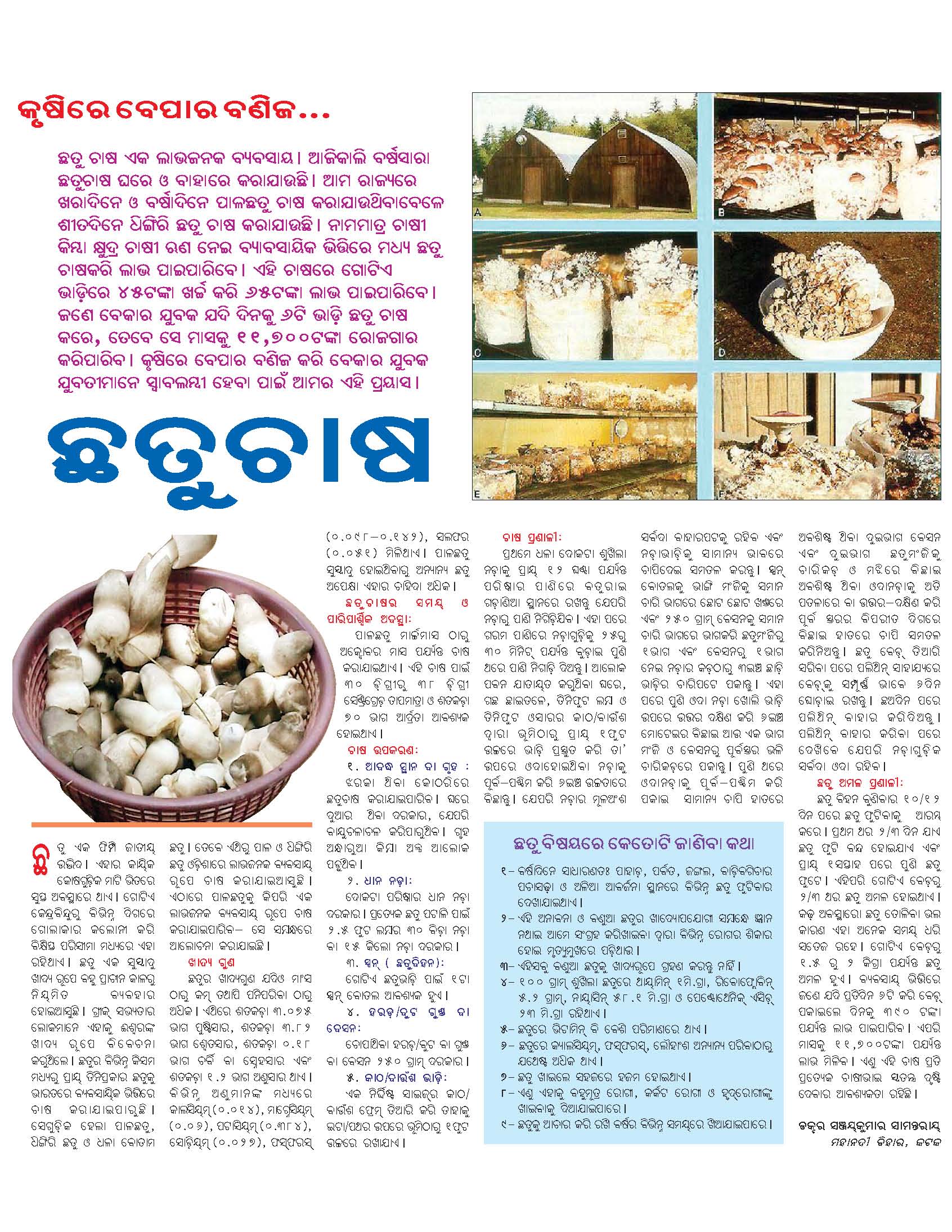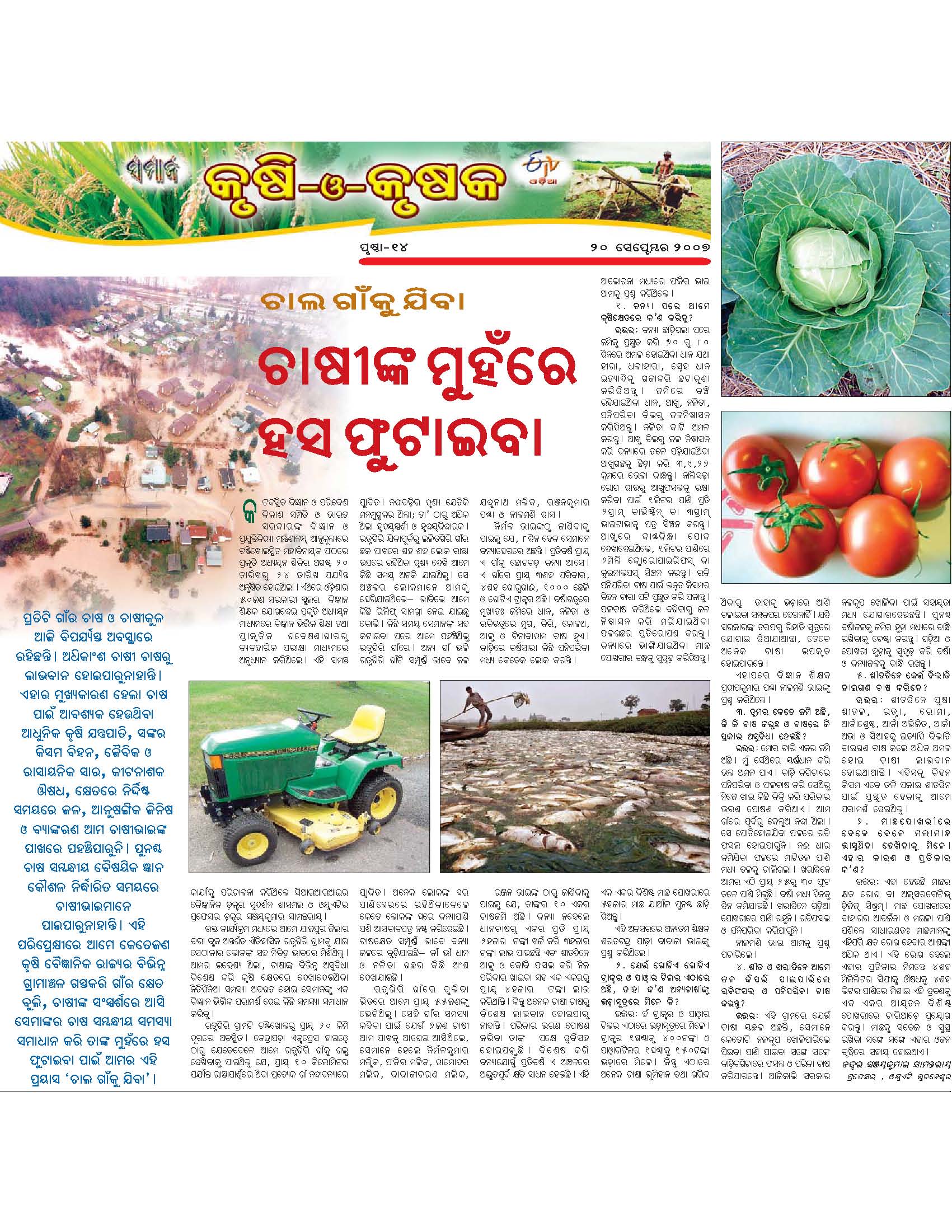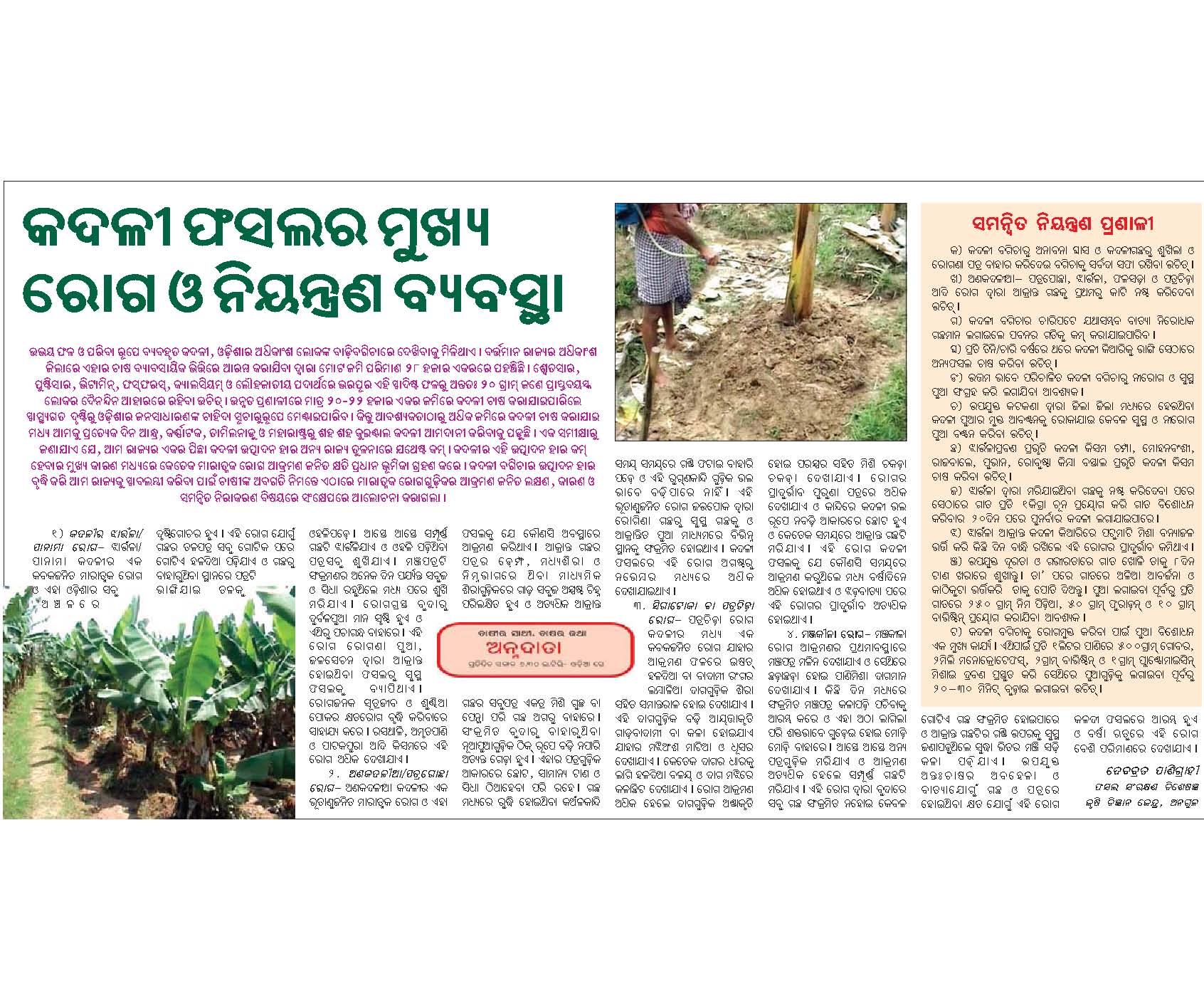Archive for the 'AGRICULTURE & FARMING' Category
Winter beans and daals: Samaja article
Pulse (daali) Comments Off on Winter beans and daals: Samaja articleWinter vegetables: article from Samaja
Pulse (daali), Vegetables Comments Off on Winter vegetables: article from SamajaProtecting seeds: Government ad in Samaja
Seeds Comments Off on Protecting seeds: Government ad in SamajaNew industrial policy to give importance on agro-food processing, IT, bio-technology, medicine, pharmaceuticals, garments and textile
ADMINISTRATION & REPs, AGRICULTURE & FARMING, Uncategorized Comments Off on New industrial policy to give importance on agro-food processing, IT, bio-technology, medicine, pharmaceuticals, garments and textileThe Statesman reported the following.
The new industrial policy of the state is laying primary importance on agro-food processing, IT, bio-technology, medicine, pharmaceuticals, garments and textile, said state energy, IT and culture minister Mr Surya Narayan Patro.
Dhamara fishing jetty to become an international fishing harbor : Dharitri, Samaja
Fishery, Ports and waterways Comments Off on Dhamara fishing jetty to become an international fishing harbor : Dharitri, SamajaFollowing are excerpts from a report in Business Standard.
Gujarat Heavy Chemicals Ltd.’s textiles division plans to go for organic cotton contract farming in Gujarat, Orissa and Madhya Pradesh in a big way.
The company aims to cover 30,000 hectares in these states. For a start the company has finalised on 2,000 hectares of organic contract farming in Orissa.
The company’s organic home linen segment is witnessing a great demand in the European and the US markets. The company is planning to go in for a tie-up with the National Institute of Fashion Technology(NIFT) to allow the students to go in for internships at GHCL units and to tap talents for their facility.
Neeraj Jalan, General Manager, GHCL, told Business Standard: “We are aiming to cover around 30,000 hectares under contract farming for organic cotton. We have identified three states for this which included Gujarat, Orissa and Madhya Pradesh. We have finalised around 2,000 hectares of land for contract farming in Orissa.
Progress report on Subarnarekha inter-state irrigation project
Irrigation, Rivers and Bridges, Subarnarekha, WATER MANAGEMENT Comments Off on Progress report on Subarnarekha inter-state irrigation projectFollowing is an excerpt on this from a report in Telegraph.
… Subernarekha is an inter-state river flowing through Jharkhand, Orissa and Bengal. Under this agreement, water will be shared by the three states in the ratio of 71 per cent, 27 per cent and 2 per cent respectively.
On the Jharkhand side, construction of the Chandili dam and Galudih barrage on the upstream of Subernarekha and 90 per cent earthwork has been completed, officials in the state water resources department said.
However, this inter-state irrigation project is still incomplete as the Jambhira barrage and canal system on Jharkhand-Orissa border is yet to be completed. A sum of Rs 140 crore was spent on the construction of the barrage and canal during 2006-07. An estimated Rs 253 crore will be spent this year, said state water resources secretary Aurobindo Behera. Of it, Orissa will provide Rs 105 crore to Jharkhand this fiscal to complete work on its side. The project from Jharkhand is expected to be complete by December 31, 2008, so that Orissa is able to get irrigation water, said Behera. So far, construction of a 46km canal on Orissa side has been completed and the project is expected to be commissioned by 2009-10.
An estimated Rs 3,500 crore will be required for completion of the project, out of which Rs 1,756 crore will be made available under Accelerated Irrigation Benefit Programme of Central government. Orissa has so far spent Rs 466 crore on the project, said the EIC.
Consumer price index for agricultural and rural laborers
AGRICULTURE & FARMING, RURAL & SPECIAL PROGRAMS Comments Off on Consumer price index for agricultural and rural laborersThe table of consumer price index for agricultural and rural laborers in 20 states (including Orissa) is given in http://pib.nic.in/release/release.asp?relid=32108.
Simple water harvesting techniques for drought proof farming – a case study
AGRICULTURE & FARMING, PHILANTHROPY, SHG, DISTINGUISHED NGOS & FOUNDATIONS, Sambalpur, Water harvesting Comments Off on Simple water harvesting techniques for drought proof farming – a case studyFollowing is an excerpt on this from a report in New Indian Express.
The 10 decimal land covered with vegetable plants of different varieties is now a source of income for Hari Podh of Khamarbadmal village, 50 km from here. …
Today, traders wait at his farm to buy vegetables plucked straight from his field. This, apparently, is something new the village is witnessing. With no water source, vegetable cultivation was a dream for the villagers. But intervention by an NGO, Mass, changed it all.
Hari just had to invest Rs 4,000 for constructing a Chahala (a small water harvesting body dug at the lowest point of land) and this changed the condition of his land.
Hari’s not the lone case. Joseph Bage of the same village invested Rs 10,000 on his three acre land and constructed a traditional water harvesting body. Now, his land is completely drought-proof.
Earlier, Khamarbadmal was one among the drought-hit villages in the region. People had land but no food. Poor quality of land devoid of supplementary irrigation sources yielded no results.
However, inspired by Hari and Joseph, the villagers are now in the process of constructing a series of water harvesting structures which when completed, will make 80 per cent of cultivable area of their village totally drought-proof and open up income generating sources. Mass is providing the villagers financial support for the purpose.
They have planned a total of 22 water harvesting structures of different types, shapes and structures depending on their suitability.
Besides, they are taking up farm land improvement activities. They have already completed construction of six structures.
Following are some excerpts from a report on this in Kalinga Times.
The milk products as well as horticulture and agro products of OMFED will now be available at petrol pumps of the Indian Oil Corporation (IOC) across the State.
The operation was launched at the Bhamra IOC petrol pump at CRP Square of the city on Tuesday soon after a memorandum of understanding was signed between
OMFED and IOC. Similar milk parlours will be opened at other places in due course.
Post flood farming : another Samaja article
Post-flood farming Comments Off on Post flood farming : another Samaja articleOctober farming for farmers: a Samaja article
AGRICULTURE & FARMING Comments Off on October farming for farmers: a Samaja articleGrowing earthworms for compost: Samaja article
AGRICULTURE & FARMING Comments Off on Growing earthworms for compost: Samaja articleRecent Central government programs
Aaam Admi Bima Yojana, Central govt. schemes, Health insurance for BPL workers, HRD-n-EDUCATION (details at orissalinks.com), National Old Age Pension (NOAP), National Policy for Farmers, NFSM (National Food ...), Rashtriya Krishi ... (RKVY) Comments Off on Recent Central government programsFollowing are excerpts from an Indian Express article.
Aam Admi Bima Yojana (Launch Date: October 2)
Announced in this year’s Budget, the scheme will be launched on Gandhi Jayanti . It provides for insurance to the head of the family or an earning member of the family of a rural landless household who is aged between 18 and 59 years against natural as well as accidental death and against partial/permanent disability.
The family is entitled to Rs 75,000 as insurance in case of accidental death or permanent disability of the head or earning member of the household. In case of natural death and partial disability, the benefits would amount to Rs 37,500. The annual premium per member is Rs 200, to be equally shared by the Centre and the state Government.
Health Insurance Scheme for BPL Workers (Launch: October 2)
After the Social Security Bill for the unorganised sector came under severe criticism from Left parties, which said it had no specific schemes for the sector, the UPA Government decided to announce a specific health insurance scheme for such workers. The Health Insurance Scheme for Workers in the Unorganised Sector would be launched in a phased manner for BPL workers/families from October 2. All the beneficiaries will be issued smart cards for identification.
National Old Age Pension (Launch: November 19)
The UPA Government has said it will provide old age pension to all citizens above the age of 65 years and living below the poverty line. This marks an expansion of the existing Old Age Pension Scheme, from covering only “persons of 65 years or higher and a destitute” under pension to one “who is 65 years or higher and belonging to a household below the poverty line (BPL)”. The launch is to coincide with Indira Gandhi’s birth anniversary on November 19.
Scholarship for Minority Students (Already launched)
Keeping in view the Sachar Committee report, the UPA Government announced a Centrally sponsored scheme of Merit Cum Means Based Scholarship to students from Minority Communities pursuing professional/technical courses at undergraduate and postgraduate levels.
The scheme, which will provide scholarship to 20,000 students every year, will cover a large chunk of the tuition fees as well as provide maintenance allowance to selected beneficiaries from the minority community throughout their professional course. In case of 50 identified institutes, which include IITs, IIMs, NITs, AIIMS and others, the Government has announced that the tuition fees would be paid in full.
Rashtriya Krishi Vikas Yojana (Announced on August 15)
With suicides by farmers still a political hot potato and the agrarian crisis showing no signs of abating, the UPA Government announced a Rashtriya Krishi Vikas Yojana (RKVY) on Independence Day. With an allocation of Rs 25,000 crore over the next five years, the scheme is meant to push up investment in agriculture substantially.
It aims to encourage state Governments to raise their agricultural expenditure, hoping this would boost agriculture and allied sector production as well as productivity and farm incomes, and reduce yield gaps across the country.
National Food Security Mission (Announced on August 15)
Concerned over food security and mindful of the fact that it had to resort to wheat imports for the second consecutive year in a row, the Government launched the National Food Security Mission (NFSM), which is aimed at increasing the production of rice by 10 million tonnes, wheat by 8 million tonnes and pulses by 2 million tonnes by 2011-12. It also hopes to create additional employment opportunities. The Government has identified 305 districts in 16 states where Rs 4,900 crore would be invested over the next 5 years.
National Policy for Farmers (Likely launch: October 2)
Having already announced two major schemes for the agriculture sector, the UPA Government has also decided to act on the recommendations of the National Commission on Farmers, which it had constituted when it came to power in 2004. One of these recommendations was a National Policy for Farmers. The policy, to be announced soon, will replace the existing National Agricultural Policy, 2000.
Education Mission (Announced on August 15)
Taking a step forward from the 54 per cent expansion of the higher education infrastructure, the Government has announced setting up of eight new IITs, seven new IIMs, three new IISERs and 30 new Central universities. In the secondary education sector, a massive expansion plan is on the table involving upgradation of over 1 lakh schools. Another 6,000 new schools of good quality are being planned. And the PM has given a stiff deadline of two months for finalising the infrastructure, including their locations.
Orissa government prepares proposal for NFSM (National Food Security Mission)
AGRICULTURE & FARMING, Balangir, Bargarh, Cuttack, Ganjam, Kalahandi, Keonjhar, National Food ... (NFSM), Nayagarha, NFSM (National Food ...), Odisha govt. action, Puri, Rayagada Comments Off on Orissa government prepares proposal for NFSM (National Food Security Mission)Following are excerpts from a report in New Indian Express.
The State Government has prepared a Rs 850-crore draft project proposal under the National Food Security Mission (NFSM) for placing before the Centre for funding. The objective of the mission is to increase production and productivity of rice and pulses in 21 of 30 districts of the State in a sustainable manner.
The other objectives are to enhance farm level economy, restore confidence among farmers and create employment opportunities.
While 15 districts will be covered under NFSM for rice, 10 districts have been chosen for increased production of pulses. While Balangir, Kalahandi, Keonjhar and Nayagarh will be covered under the mission both in rice and pulses, the districts covered under NFSM in pulses include Bargarh, Cuttack, Ganjam, Khurda, Puri and Rayagada.
The project, to be implemented during the 11th Plan period , is expected to cover 20 lakh hectares for rice cultivation and 13.57 lakh hectares for pulses. The State has planned to increase yield of rice from 1,690 kg per hectare in 2007-08 to 2,095 kg per hectare by 2011-12 in the mission districts.
The estimated production of rice in the mission districts will increase from 33 lakh tonnes to 42 lakh tonnes. It has projected to enhance the productivity of pulses from 478 kg per hectare in 2007-08 to 594 kg per hectare in 2011-12. The low yield of rice in the State is due to several factors.
While more cultivable areas are under rainfed conditions, the kharif and rabi crops are totally dependent on monsoon rains. Lack of farm mechanisation, improved technology, training of farmers, soil management, pest management and non-availability of quality seeds are the other factors for low productivity.
The Centre will provide full financial assistance and the fund will be utilised for introduction of hybrid seeds, scientific management of problematic soil, pest management, farm mechanisation, training of farmers, Agriculture Director Arabinda Padhee said. The Government has projected to spend Rs 650 crore for rice production and Rs 200 crore for improved farming of pulses.
